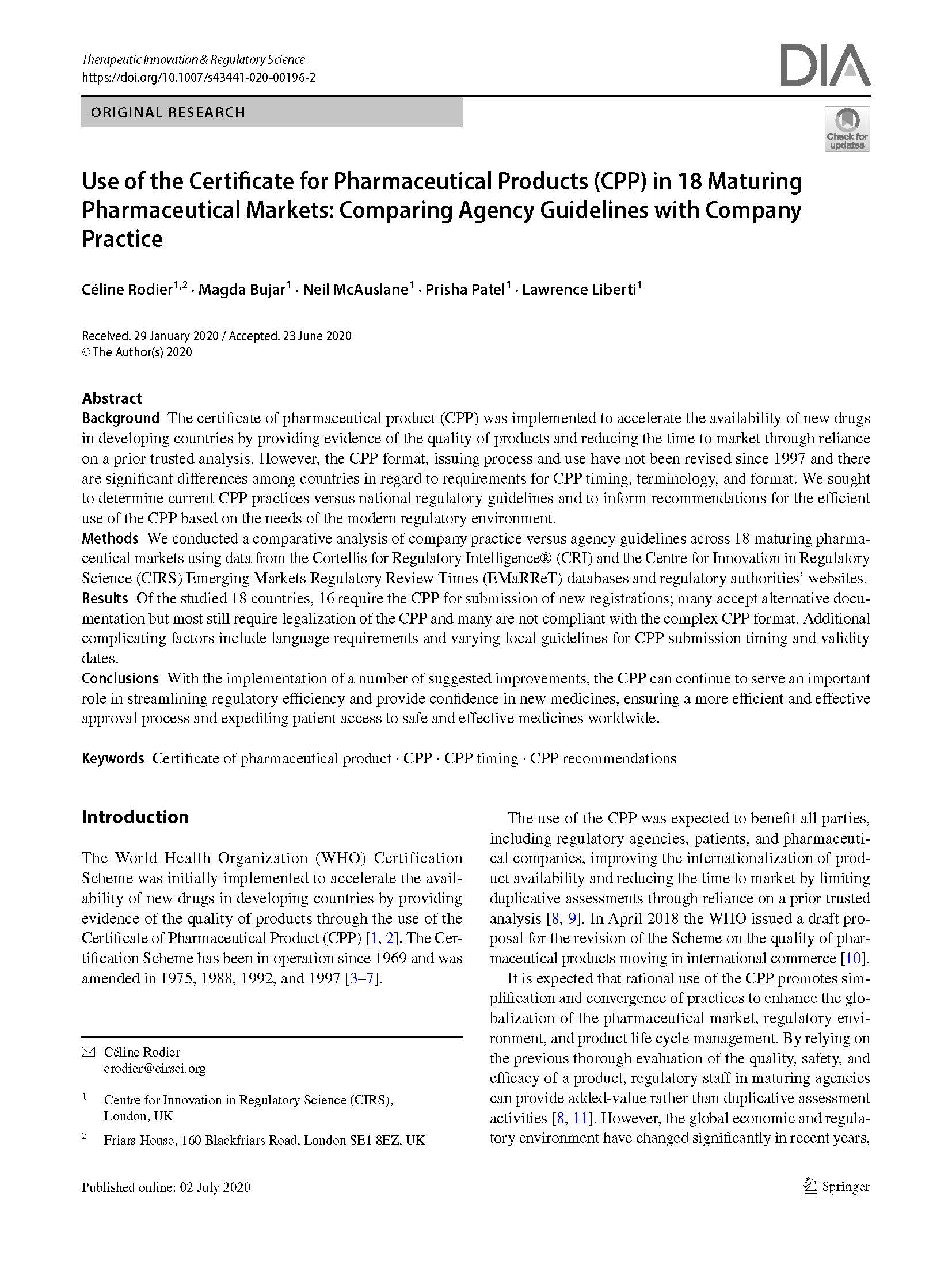Background: The certificate of pharmaceutical product (CPP) was implemented to accelerate the availability of new drugs in developing countries by providing evidence of the quality of products and reducing the time to market through reliance on a prior trusted analysis. However, the CPP format, issuing process and use have not been revised since 1997 and there are significant differences among countries in regard to requirements for CPP timing, terminology, and format. We sought to determine current CPP practices versus national regulatory guidelines and to inform recommendations for the efficient use of the CPP based on the needs of the modern regulatory environment.
Methods: We conducted a comparative analysis of company practice versus agency guidelines across 18 maturing pharmaceutical markets using data from the Cortellis for Regulatory Intelligence® (CRI) and the Centre for Innovation in Regulatory Science (CIRS) Emerging Markets Regulatory Review Times (EMaRReT) databases and regulatory authorities’ websites.
Results: Of the studied 18 countries, 16 require the CPP for submission of new registrations; many accept alternative documentation but most still require legalization of the CPP and many are not compliant with the complex CPP format. Additional complicating factors include language requirements and varying local guidelines for CPP submission timing and validity dates.
Conclusions: With the implementation of a number of suggested improvements, the CPP can continue to serve an important role in streamlining regulatory efficiency and provide confidence in new medicines, ensuring a more efficient and effective approval process and expediting patient access to safe and effective medicines worldwide.
Rodier, C., Bujar, M., McAuslane, N. et al. Use of the Certificate for Pharmaceutical Products (CPP) in 18 Maturing Pharmaceutical Markets: Comparing Agency Guidelines with Company Practice. Ther Innov Regul Sci 55, 118–128 (2021). https://doi.org/10.1007/s43441-020-00196-2

